 |
 |
 |
| Department of Theoretical and Applied Linguistics, School of English Language and Literature, Aristotle University of Thessaloniki. | ||
People
 Dr.
Katerina Nicolaidis Dr.
Katerina Nicolaidis Anna
Sfakianaki Anna
Sfakianaki Eleni
Tsiartsioni Eleni
Tsiartsioni Vicky
Papachristou Vicky
Papachristou Prof.
Eleftherios Panagopoulos Prof.
Eleftherios PanagopoulosResearch & Projects |
EPG Analysis EPG data from 6 Greek speakers
with profound hearing impairment have been recorded and analysed. The
speakers were young adults or adolescents and the intelligibility of
their speech varied from highly intelligible to unintelligible speech. 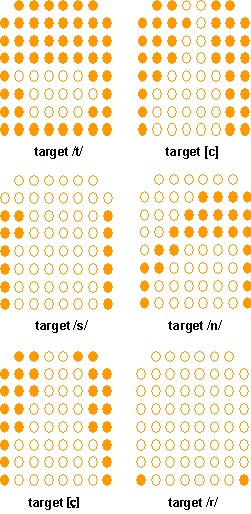 In the phonetics laboratory we use EPG as a visual feedback
technique for the teaching of lingual consonants to speakers with
hearing impairment.
The following PhD research is
being conducted by Anna Sfakianaki under Dr. Katerina Nicolaidis'
supervision.
The stimulus will be placed
within the carrier phrase ‘ËÝăĺ _____ đÜëé’ (Say ____ again’) and each
sentence will be repeated 10 times. The 540 sentences will be
randomised. Praat
(doing phonetics by computer,
copyright ©1992-2004
by Paul Boersma and David Weenink) will be used for the acoustic
analysis. F1 and
F2 will be measured at the onset, midpoint and end of each vowel so as
to
monitor the formant movement throughout each disyllable. For the
formant onset
value, the cursor will be placed at the onset of the second cycle of
clear
complex periodic activity so as to get a reliable reading from a
Gaussian
window. The formant offset value will be measured at the end of the
cycle with clear complex periodic activity. In addition
duration
will be measured for each vowel from a waveform display. The left and
right
cursors will be placed at the onset and offset of complex periodic
activity
respectively.
The measurements will be analysed statistically for each subject and for each group. The results will attempt to shed light on the coarticulation effects in respect to factors such as: a) the nature of the vowel, b) stress, c) consonant type (place and manner), d) sex (male or female), e) normal vs. impaired hearing, f) degree of hearing-impairment, g) intelligibility score. Some of the acoustic data You can see the spectrograms of two nonsense words used in the experiment described above: /'papi/ and /pa'si/. The hearing impaired productions are on the left and the normally hearing ones on the right. /'papi/ was produced by a female subject, aged 25, with a hearing loss of 110+ dB and /pa'si/ was produced by a female subject, aged 26, with a hearing loss of 103.3 dB (PTA at 200, 1000 and 2000 Hz). The control subject is a female aged 20. Click on the buttons below the spectrograms to hear the productions. 'papi 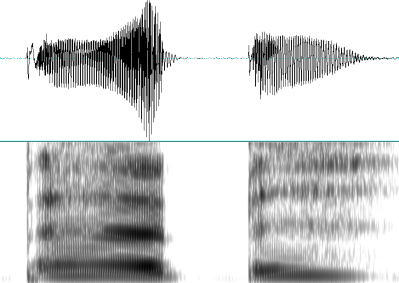 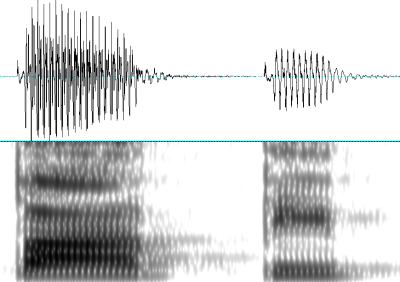 
 pa'si 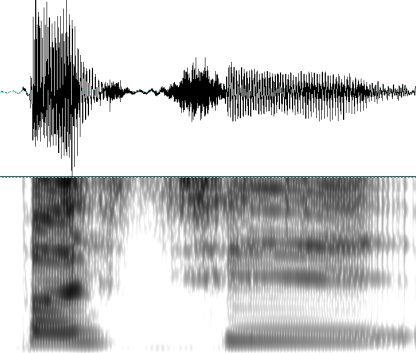 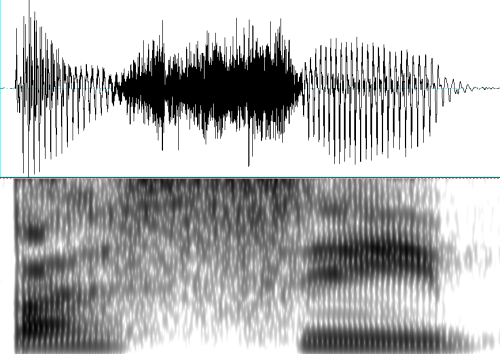 
 On the table below you can click and listen to four words and a phrase produced by ten subjects with profound hearing loss (last column, in dB at 500, 1000 and 2000 Hz). This material is part of the intelligibility test described above. The transcription is in Greek SAMPA symbols.
|